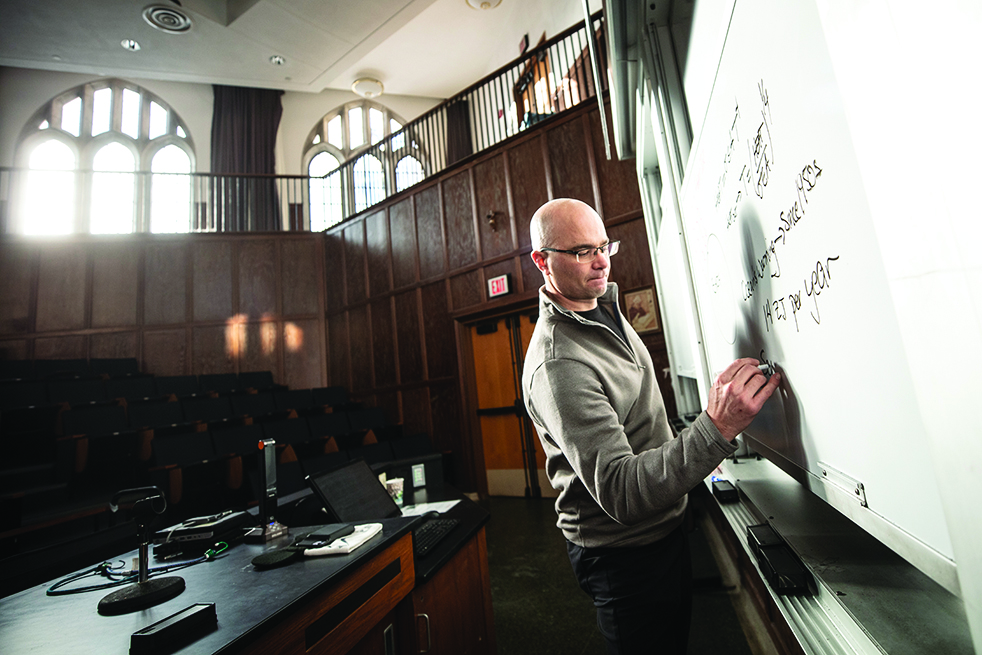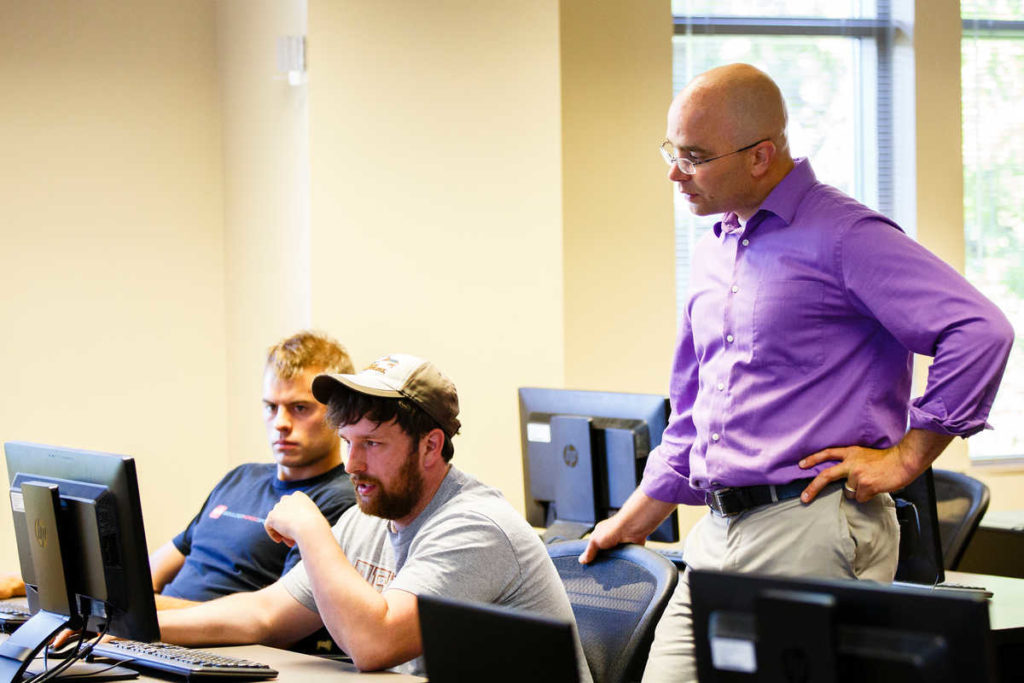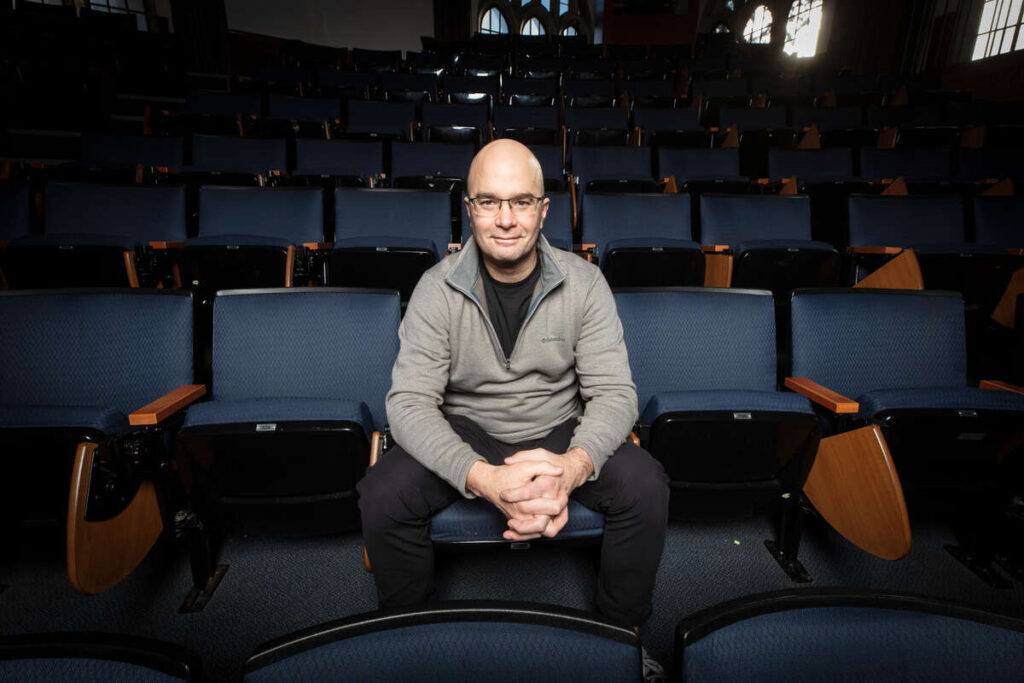Just steps from 84-degree water and the world-famous Seven Mile Beach in Grand Cayman, you wouldn’t expect to see a group of Minnesota students huddled together over their laptops, discussing strategies and putting final touches on a workforce housing presentation. But, in January that was a common sight in George Town as 22 students—all but one from the University of St. Thomas—participated in a J-term class charged with researching and identifying potential new sites for affordable workforce housing.
Like many other spots around the globe, Grand Cayman—known for its incredible beaches along with even more incredible real estate prices—has its share of challenges when it comes to supplying quality, affordable housing for a growing workforce, including the many people vital to the success of the British protectorate’s blossoming hotel and restaurant industry. UST Real Estate Professor Tom Hamilton wanted to provide students with a global real-world challenge, a look at real estate development and planning in another culture with a different mix of resources, under different laws, currency, and another type of government. In the J-term class, students were challenged to learn about workforce housing issues, study the island’s Master Development Plan, analyze the local market, and develop research-based recommendations.
Dr. Hamilton discussed why Grand Cayman is so unique and provides such an excellent classroom: “Since this is an island, you don’t have the spillover effects that you see in many other venues, such as the spillover from the Twin Cities to neighboring Wisconsin where rules and laws are different. For example, if a developer doesn’t like what they see in one location, and the market is strong and deep enough, they go to the area with the least resistance. For Cayman, the next location is hundreds of miles away.”
Caymanian government officials were very receptive to the students. At the end of the class, students presented their reports to the Department of Planning and local officials were very impressed with the depth and quality of reports. Haroon Pandohie, Director of Planning for Grand Cayman, was particularly impressed. He said that the ideas presented were consistent with the direction that the department would like to proceed in providing more affordable housing, and the level of the students’ analyses were of a very high quality. Pandohie added that these students were able to identify very reasonable areas to focus development of affordable housing.
UST Business Law Professor Dale Thompson, also an economist, brought additional expertise to the classroom by teaching the students how the supply of and demand for real estate can be measured and how governmental regulation, taxation and environmental protection works in the Cayman Islands. Since almost all the resources needed to produce housing must be imported, those resources are charged a duty fee of roughly 20% which is passed on home buyers in increased home costs.
Students discovered that many Caymanians, just like many Americans, hold tight to the dream of owning a single-family home on its own plot of land. After incurring the mass devastation of Hurricane Ivan, homes must also be built with an eye toward surviving nature’s worst wrath. When students selected areas for affordable housing development, they had to show how they would address those issues, Hamilton said. Some of the students also added other amenities such as community gardens and craft or flea market sites to their proposed affordable housing developments.
Many people live together in the Caymans, Hamilton explained, not because they want to, but rather because they have to due to the raw economics of price. A small, single bedroom apartment will cost well over $1,000 CI (Cayman Island dollars, or $1,200 in U.S. dollars) plus utilities. Since many of these renters work in service sector jobs that oftentimes don’t pay high wages, people have to find housemates or roommates to share costs, the professor said.
Upon arriving on the island the first week of January, the professors and their students met with planning authorities in the local government and were briefed on the issues at hand. The students then had about three weeks to get to know the island, learn about the existing workforce housing supply and demands (including local preferences and culture), and attend classes on conducting real estate market analysis. Each student was required to complete group and individual projects as well as complete daily journal entries pertaining to the local real estate market and pass a final exam. The projects involved the type of real estate market analysis that these students—mostly seniors—could be expected to conduct for future employers, Hamilton said.






